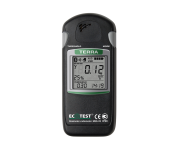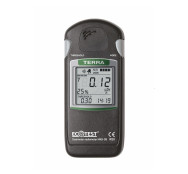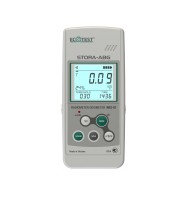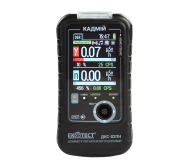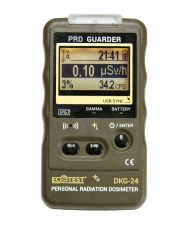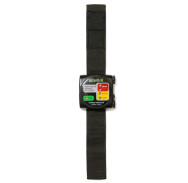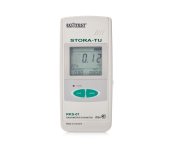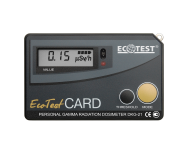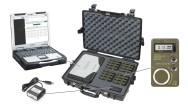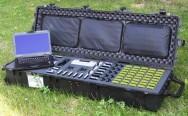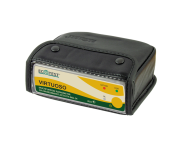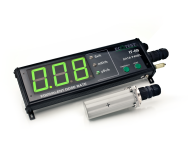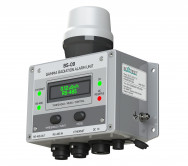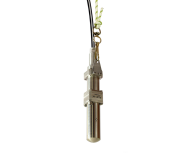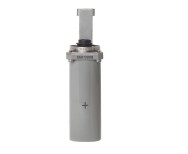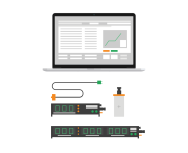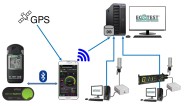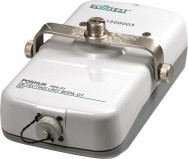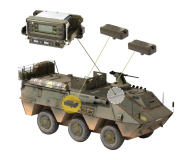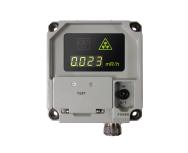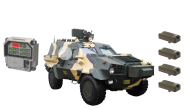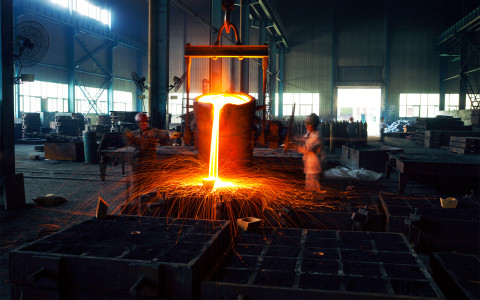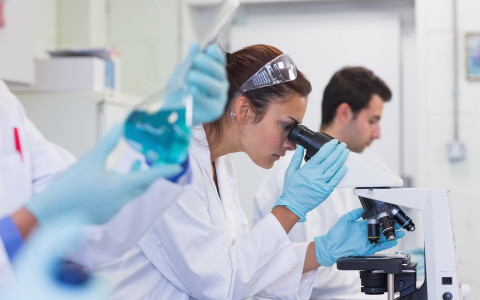We hear of radiation therapy, especially for certain types of cancer. We also hear of radiation disasters such as the Fukushima Daiichi nuclear power plant accident in 2011.
Radiation, thus, can be both helpful and harmful to humans. Hence the need to deepen our understanding of what radiation is all about. That is also why we need radiation detectors.
Introduction To Radiation and Radiation Detectors
The term “radiation” has different meanings in biology and physics. Here, we focus on radiation as understood in physics.
Radiation in physics refers to the energy emission by subatomic particles. Sunshine is an example of natural radiation, consisting primarily of infrared and ultraviolet rays.
Such forms of radiation with extremely low frequency are non-ionizing. Microwave and radio frequencies are examples of human-made non-ionizing radiation.
The movement of high-energy particles as electromagnetic waves, however, causes ionization. X-rays and gamma rays are typical examples of ionizing radiation.
Over-exposure to either form of radiation can be harmful to humans. Ionizing radiation exposure can even be fatal. Exposure to non-ionizing radiation is comparatively safer as it cannot penetrate into the tissues. However, over-exposure can cause damage to the skin and sight.
In a nutshell, exposure to small doses of radiation of either form is not problematic. However, exposure to medium levels can cause some damage and sickness. Exposure to high doses of ionizing radiation can lead to severe ailments and death.
That is why we need radiation detectors. These are devices that identify radioactive materials, thereby helping us to limit our exposure to them.
Also known as particle detectors, radiation detection instruments can also measure subatomic particles released by radioactive materials, cosmic rays, or those released by particle accelerators.
Depending on the radiation detector type, a detection instrument can identify and measure particles that include alpha particles, electrons, neutrons, protons, and gamma rays. Innumerable baryons and mesons are also within the list.
The First Radiation Detectors
The International Atomic Energy Agency’s (IAEA) bulletin (volume 23, number 4) informs us that detection instruments for ionizing radiation existed in principle since the 17th century. That is when the phenomenon of thermoluminescence was described first.
The 18th century witnessed the invention of the gold leaf electroscope. Photography developed in the early 19th century. The discovery of what we today know as radiation science, however, happened towards the end of the 19th century.
We accept W.C. Roentgen’s discovery of x-ray photographs in December 1895 as the beginning of a new field of scientific research. That development paved the way for modern radiation detector devices. The inventions of Becquerel, Pierre and Madame Curie also made significant contributions.
Crookes invented the spinthariscope in 1903. That was the first instrument that could detect individual rays. German scientists Hans Wilhelm Geiger and Walther Müller, however, are best known as the pioneers of modern radioactive material detection instruments.
Working with the British scientist Ernest Rutherford, Geiger introduced the first successful device for detecting individual alpha particles in 1911. Geiger then worked with his doctoral student Walther Müller to improve his device.
As compared to the original Geiger counter, the Geiger-Müller counter is more durable, efficient, portable, and responsive. It can also identify multiple varieties of ionization.
Other early radiation detection devices include the cloud chamber. C.T.R. Wilson first made this device in 1911. This emerged to be an efficient research tool, used in many discoveries between 1923 and 1930.
It has been a history of continuous evolution since. Lagsdorf built the continuously sensitive diffusion cloud chamber in 1939. The 1950s witnessed the development of bubble chambers. Streamer chambers evolved in the decade of the 1960s.
Electronic radiation detectors evolved with the invention of the transistor in 1947. Most modern radiation detector types use calorimeters. Modern devices can also measure the charge, momentum, spin, etc. of the particles.
Types Of Radiation Detectors
It is possible to classify radiation detectors from two perspectives. From the angle of how the detector works, there are three types.
Geiger-Müller Counter
This continues to be the most prevalent detector type. The Geiger tube consists of a gas-filled tube with a pair of electrodes. a high voltage operates between them.
When radiation enters the tube, it ionizes the gas. The electrodes attract the electrons and ions, producing an electric current. That gets displayed. This type of radiation detectors can identify alpha, beta, and gamma radiation.
Scintillation Detectors
Also known as scintillation counters, these radiation detectors use the excitation impact of incident radiation on a scintillating material. NAT(TI), which is thallium-doped sodium iodide, is the most prevalent scintillating material in use.
Scintillation detectors identify the light pulses that get generated by the excitation.
Gaseous Ionization Detectors
This radioactive material detection instrument uses the ionization of gas molecules by radiation. The electrons and ions generated produce a flow of current, which gets measured.
From the perspective of usage, it is possible to categorize radiation detectors into four types.
Handheld Survey Meters
As evident from the name, these are handheld devices that measure and display information about the level of radiation present. Most of these devices detect beta and gamma radiation. Some devices like the Ecotest Group’s MKS-UM can also measure alpha radiation.
Personal Radiation Detector (PRD)
These are typically wearable devices the size of a pager to help detect gamma and/or neutron/x-ray radiation. These are not as sensitive as the handheld variants but are critically useful in specific situations.
The Ukrainian army and the Ministry of Emergencies in Kazakstan use the Ecotest Group’s DKG-21M, for instance.
Radiation Isotope Identification Device (RIID)
These are devices that can identify both the source of the radiation and the type of radionuclide causing it.
Radiation Portal Monitors (RPM)
These are typically the doors that we pass through before entering airports, and other areas where public safety needs to be ensured.
Where And When You Need Radiation Detectors
Radiation detectors are useful in any profession that needs one to handle radioactive devices or causes any exposure to them. Some of the typical professions where the use of PRDs are vital for personal safety include the following:
- Military and paramilitary personnel
- Certain positions in the police/ law enforcement agencies
- Nuclear scientists
- People working or living near nuclear power plants and radioactive waste dumps etc.
- Healthcare professionals using/exposed to radioactive devices
Radiation survey meters are equally essential in all of the above situations, and more. Border security, for example.
We are exposed to different doses of radiation in our everyday lives. Both from natural sources and human-made devices. We still don’t know what the effects of sustained exposure to low levels of exposure can be.
To know one’s exposure level is to remain informed, in case that data becomes necessary to explain some health issue.

